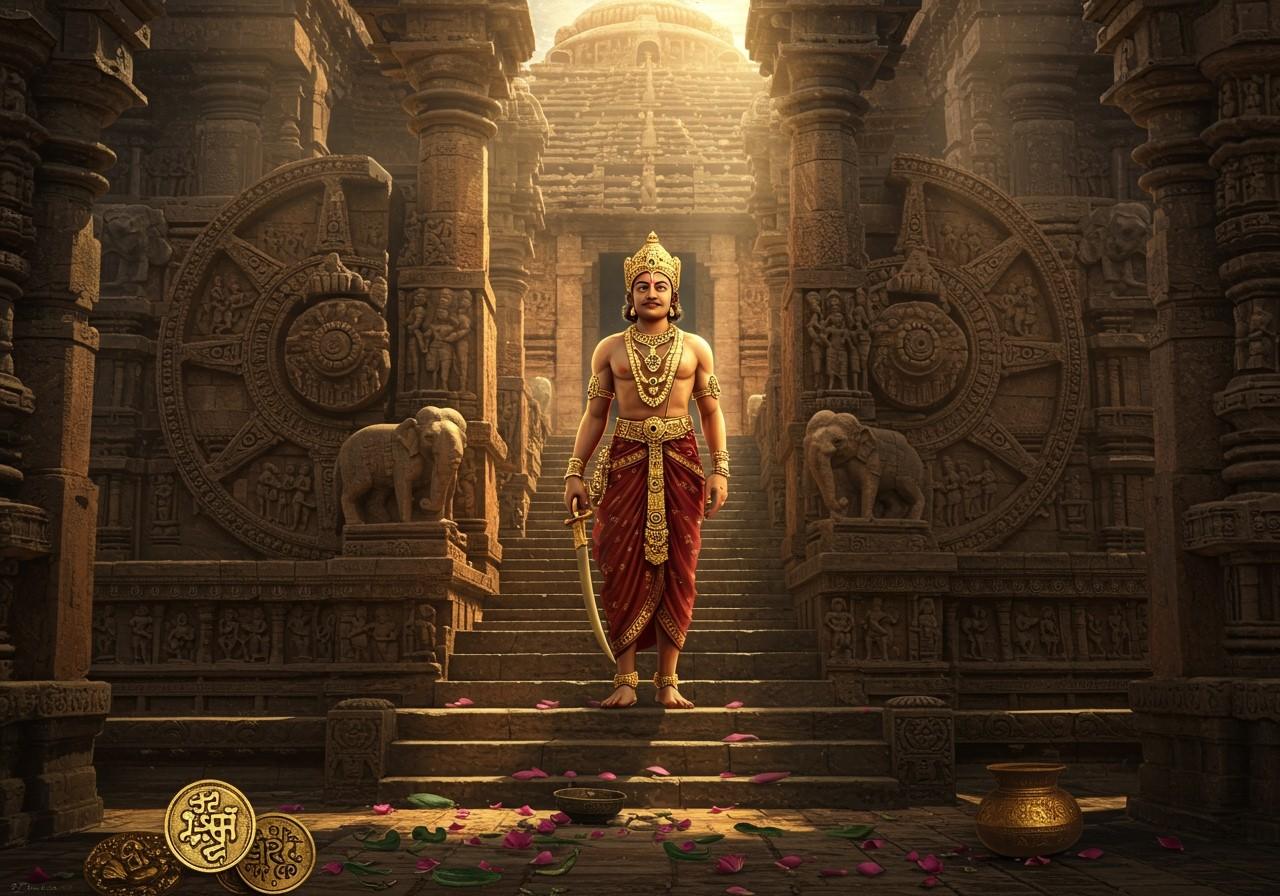
Narasimhadeva I, a pivotal figure in Indian history, significantly shaped the Eastern Ganga Dynasty’s trajectory. His reign, a blend of military achievements and cultural patronage, offers a glimpse into the socio-political dynamics of 13th-century India. Delving into his life unveils a deeper understanding of the era’s complexities and advancements.
The Eastern Ganga Dynasty: A Historical Overview
The Eastern Ganga Dynasty, renowned for its influence and dominance, held sway over present-day Odisha and parts of northern Andhra Pradesh. Preceding Narasimhadeva I’s reign, the region witnessed a complex interplay of political alliances, conflicts, and power shifts. Hinduism flourished, evidenced by the emphasis on temple construction. A robust economy, fueled by agriculture, trade, and maritime activities, provided a fertile ground for Narasimhadeva I’s impactful rule.
Narasimhadeva I’s Ascent to Power
Inheriting the throne from his father, Anangabhima Deva III, Narasimhadeva I (1238-1264 CE) navigated a landscape fraught with challenges. He demonstrated remarkable leadership in stabilizing the kingdom, securing internal peace, and expanding its boundaries through strategic military campaigns. His victories against neighboring Muslim forces of Bengal solidified his reputation as a skilled military strategist. Simultaneously, he cultivated crucial alliances, fostering regional stability and extending the Ganga Empire to its zenith.
Architectural and Cultural Flourishing
Narasimhadeva I‘s passion for art and architecture is evident in his commissioning of the magnificent Konark Sun Temple, a UNESCO World Heritage Site. This architectural marvel, built between 1238 and 1264 CE, exemplifies the Kalinga architectural style and stands as a testament to the era’s cultural apex. Its intricate carvings and symbolic representations reflect the rich spiritual and artistic sensibilities of the time. His patronage extended beyond the Konark Temple, resulting in the construction of numerous other significant temples and structures that enriched the region’s architectural heritage. Under his rule, art thrived, with literature, sculpture, and music experiencing a golden age.
Religious and Social Policies
A devout Hindu, Narasimhadeva I actively promoted Hinduism, particularly the worship of Surya (the Sun God). The construction of temples and religious endowments served as tangible expressions of his devotion. While championing Hinduism, his reign also exhibited a degree of religious tolerance towards other faiths. His commitment to social welfare manifested in his support for education and agriculture. Furthermore, his efforts to codify laws played a vital role in maintaining social order and stability throughout his kingdom.
Lasting Legacy and Impact
Narasimhadeva I‘s reign left an indelible mark on Odisha’s history and the broader Indian subcontinent. His cultural and architectural contributions, particularly the Konark Sun Temple, became enduring symbols of the Eastern Ganga Dynasty’s glory. His influence resonated through subsequent generations, shaping the cultural identity of Odisha. Continued efforts to preserve his architectural marvels underscore the lasting significance of his legacy.
Poojn.in: Connecting You to India’s Rich Spiritual Heritage
At Poojn.in, we offer a wide selection of authentic puja items, reminiscent of those used during the Ganga Dynasty era, allowing you to connect with India’s rich spiritual traditions. For those intrigued by the historical significance of Narasimhadeva I and the cultural heritage of the Ganga Dynasty, we provide:
- Pure copper and brass items for temple offerings: Similar to those used in ancient temples, these items add authenticity to your puja rituals. Explore our collection of brass puja items.
- Traditional bell metal items: Crafted using time-honored techniques, these items evoke the craftsmanship of the past. Discover our range of traditional bell metal items.
- Authentic dhoop and incense: Made from natural ingredients, these aromatic offerings enhance the spiritual atmosphere. Find authentic dhoop and incense at Poojn.in.
- Pure cotton wicks and ghee: Essential for traditional deepam lighting, these items maintain the sanctity of your puja. Shop for pure cotton wicks and ghee.
- Specialized puja thalis and items for temple worship: Enhance your temple worship with our curated selection of puja thalis and accessories. Browse our collection of puja thalis and temple worship items.
These items are carefully chosen to adhere to the highest standards of ritual purity, echoing the practices observed during the prosperous reign of the Ganga Dynasty. Visit Poojn.in to explore our complete collection of traditional puja items and connect with India’s rich cultural heritage.
Note: All products are available for nationwide delivery with secure packaging to ensure their sanctity.
Reflecting on Narasimhadeva I’s Enduring Legacy
Narasimhadeva I’s legacy stands as a powerful testament to the Eastern Ganga Dynasty’s golden age. His reign, characterized by strong leadership and cultural patronage, provides a captivating glimpse into a vibrant historical period. His architectural achievements, particularly the Konark Sun Temple, continue to evoke awe and admiration, serving as tangible links to our rich heritage. Through his contributions to religion, art, and social welfare, Narasimhadeva I left an enduring impact on Odisha and beyond. His story inspires us to cherish and preserve our traditions while embracing the present. Exploring his legacy enriches our understanding of history and strengthens our sense of cultural identity.
Narasimhadeva I‘s reign (1238-1264 CE) marked a high point for the Eastern Ganga Dynasty. He successfully repelled Muslim invasions from Bengal, securing his kingdom’s safety and further solidifying his military prowess. This victory not only protected his territories but also contributed to the broader defense of the region against external threats. His leadership during this critical period played a crucial role in shaping the political landscape of the time.
Learn more about the Kandariya Mahadeva Temple.
Explore Narasimha Jayanti celebrations.


